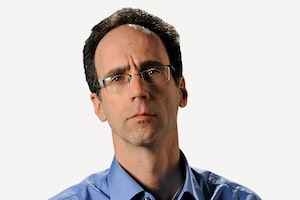The federal judiciary is edging closer to gender parity after the second consecutive year in which more women than men were appointed judges, new data show. Women now make up 43 per cent of the 905 full-time judges.
But the numbers of minorities dropped, also for the second year in a row. There were just four members of visible-minority groups chosen, and two Indigenous persons, out of 86 new judges.
In the wake of the new statistics, some members of the legal community are urging the government to do more to appoint minorities to the bench.
“I think it is time now to redefine what we mean by merit,” said Daphne Dumont, a former president of the Canadian Bar Association who practises law in Charlottetown.
“I think you can be highly meritorious for all sorts of reasons that aren’t necessarily the reasons given in the application form that you have to fill in.” For instance, Indigenous lawyers who have returned to their home communities to bring them access to justice have shown merit. The process, she and others said, typically rewards those who are perceived as leaders through volunteering, teaching and participating on boards of legal associations.
The Liberal government revised the appointment process in 2016, with a stated emphasis on diversity. For the first time, the government asked judicial applicants whether they are disabled, a member of a visible minority or an ethnic/cultural minority, LGBTQ2 or Indigenous.
Each year, the Office of the Commissioner for Federal Judicial Affairs reports on the numbers of applicants and appointments from each of the groups. The numbers cover federally appointed courts such as the superior courts of provinces, the Federal Court of Canada and the Tax Court.
From October, 2016, to October, 2017, an equal number of men and women – 37 – were appointed to these courts, although men far outnumbered women among applicants. The following year, female applicants for the first time outnumbered males, and the numbers appointed also exceeded those of males – 46 to 33. This year, appointments were 47 women, 39 men.
By contrast, the numbers went down among the minority groups. This year (from October, 2018, to October, 2019), there were 20 appointees – 14 from ethnic/cultural groups; four visible minorities; two Indigenous; and zero categorized as LGBTQ2 or disabled. (There were 19 LGBTQ2 applicants and six disabled ones. Applicants can stay in the pool for two years.) The previous year, there were seven visible minorities, three Indigenous and 29 overall. The first year of the reports, in 2017, there were 32 – including nine visible minorities.
Rachel Rappaport, a spokeswoman for Justice Minister David Lametti, said the minister has met with legal organizations since his appointment early this year to encourage applicants from visible-minority, Indigenous, linguistic-minority and LGBTQ2 communities. The meetings were also a chance to identify barriers and work together on solutions to further expand the pool of candidates, she said.
Lori Anne Thomas, president of the Canadian Association of Black Lawyers, said the appointments of black and Indigenous judges have been “woefully lacking.” She said she was singling out those two groups because they are overrepresented in the criminal-justice system, and among families in the child-protection system.
“The women who are appointed are white women. It shows there have been a lot of efforts in the legal community to create fairness and equality when it comes to gender, but it’s still not there in terms of race, or Indigenous persons,” she said in an interview.
Ms. Thomas said she would like to see “more consideration” given to members of overrepresented communities – for instance, for overcoming obstacles.
“Those who are racialized won’t be given the same kind of opportunities to speak on panels, to lead cases in the same way that especially their white male counterparts would be given."
On that point, Scott Maidment, president of the Advocates’ Society, a lawyers’ group, said change needs to come from within the legal profession, too. To become a judge, “You need opportunities for leadership within the profession.” The Advocates’ Society has revised its leadership principles to stress inclusivity, he said.
 Sean Fine
Sean Fine